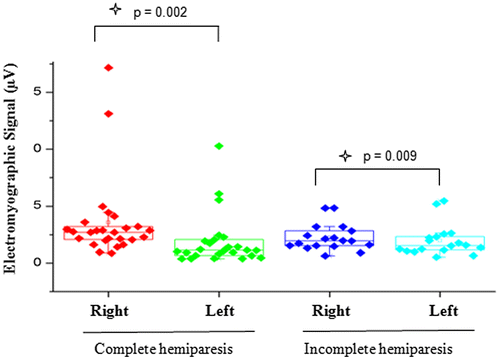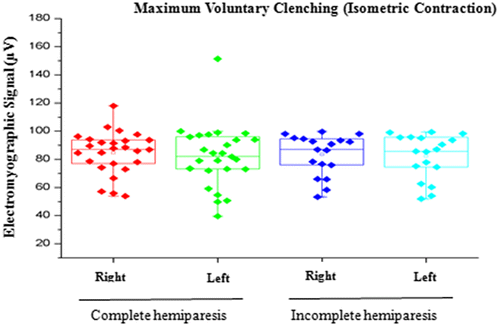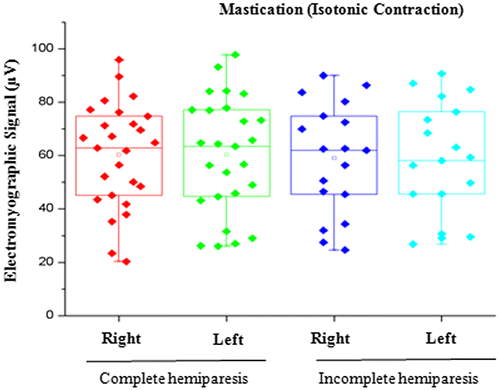Figures & data
Table 1. Prevalence of temporomandibular disorder in overall sample
Figure 1. Comparison of EMG signal between right and left sides in individuals with complete or incomplete hemiparesis with mandible at rest.

Figure 2. Comparison of EMG signal between right and left sides in individuals with complete or incomplete hemiparesis during MVC.

Figure 3. Comparison of EMG signal between right and left sides in individuals with complete or incomplete hemiparesis during isotonic contraction.

